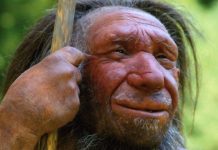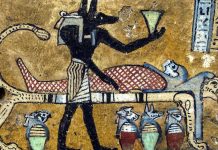Hailed as one of the greatest fossil discoveries of the past half century, Homo naledi could change our understanding of human evolution.
We love a good “new species” story here on TreeHugger – nothing beats news of broadening diversity – but this one is a bit different. And it’s a total jackpot moment for anthropology.
Two years ago scientists in South Africa acted on a tip they received from a pair of spelunkers. Through a crack in a wall far below the surface in the Rising Star cave, the cave exploring hobbyists had spied piles of bones.
As it turned out, there were indeed bones. A lot of bones … and not just any bones. After much work, scientists concluded that this gloomy and expansive chamber for the dead belonged to a previously unknown human relative, now called Homo naledi.
Discovery of the new hominin species involved a global team of more than 60 scientists led by Lee R. Berger, an American paleoanthropologist and professor of human evolution studies at the University of the Witwatersrand in Johannesburg. The team included six "underground astronauts” who excavated and retrieved the fossils after their discovery in late 2013. Because the opening was a gap of merely seven inches, the retrieval team of scientists were all women.
The species was named after the location, “naledi” means “star” in the local Sesotho language. While the date of the new species is unknown for the time-being, it’s primitive in some respects with a small brain and shoulders more apelike for climbing; but in other ways it looks very modern.
In two papers published in the open-access journal eLife, the researchers say that the more than 1,550 fossil pieces discovered so far comprise the largest sample for any hominin species in an African site. It is also one of the largest finds anywhere in the world. They have thus far recovered parts of at least 15 individuals and say that this is probably just a small fraction of what is there.
“With almost every bone in the body represented multiple times, Homo naledi is already practically the best-known fossil member of our lineage,” Berger said.
The implications for how we understand human evolution are pretty profound. As Berger sees it, rather than considering human evolution as an ancestral tree branching from a single root, H. naledi adds to the idea of evolution being more of a braided stream – a river that divides into channels, only to merge again downstream.
But honestly, nobody really knows what all the pieces of the puzzle look like.


































